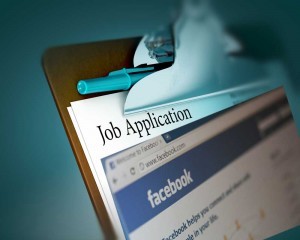Today, businesses are at the mercy of their customer reviews online. It is easy and commonplace to review business online (Yahoo, Yelp, Google reviews, etc.) and more and more customers turn to these reviews for an insight into the business before making a purchasing decision. Customers trust other customers; one study concluded, “88% of online consumers say they trust online reviews as much as personal recommendations. (Anderson, 2014).
So, it seems only natural that with a business’ success depending on customer reviews, instances would occur where businesses attempt to silence negative reviews. It is never appropriate to attempt to silence consumer reviews, instead business should respond to complaints, attempt to repair the damage done, and learn from mistakes made. However, here are some examples of businesses that chose to take the wrong route in dealing with customer reviews.
The $500 Fine
One hotel in New York, the Union Street Guest House, had a policy of charging guests $500 per negative review online (Grandoni, 2014). The hotel had this rule summarized on their website:
Since media sources have published the story, that policy has been removed, and the hotel released a statement saying that this was intended to be a joke and was never enforced by employees. However, several past guests turned to Yelp and other review sites to confirm that they had been threatened with the fine after posting negative reviews, and that they had been told they would not be charged if their reviews were taken down.
After this story went viral, the hotel received over 3,000 1-star reviews on yelp, dropping its overall rating drastically (Langfield, 2014).
EE Limited
EE Limited, a mobile and Internet provider in the UK, caught media attention after dozens of customers began to notice that their complaints against the company on social media platforms were being silenced (Fiveash, 2014). On Facebook, customers are openly asked to take their complaints to private messages, and afterwards their complaints are deleted so that the public may not see. On Twitter, the company also attempts to encourage customers to complain privately, as they are not able to delete the tweets.
Samsung
Last December, Samsung had a similar scandal. A distraught customer uploaded a video onto YouTube complaining of his Galaxy S4 phone catching fire while charging (Zolfagharifard, 2013). The video, which was generating thousands of views, caught Samsung’s attention and they contacted the customer. However, rather than simply offering to replace his phone, they sent him a letter stating that they will not replace the phone until the video has been taken down, and he is not allowed to disclose the details of this arrangement.
The customer responded to this by posting another video in which he reads Samsung’s letter and shames them for trying to silence him. Due to increased media attention, a video that Samsung initially wanted to cover up actually ended up receiving over 1.4 million views on YouTube. The video regarding Samsung’s letter currently has over 1.5 million views.
Lessons Learned
Companies that respond to complaints, and attempt to rectify the situation, do not need to delete these complaints from public forums. The response shows that the company is listening, and attempting to correct customer service issues. A company that simply deletes and ignores their consumers is only going to attract more negative attention. Listen to customer complaints, attempt to fix the problem, and learn from mistakes made so that they do not repeat themselves in the future.
References
Anderson, M. (2014, July 7). 88% of Consumers Trust Online Reviews as Much as Personal Recommendations. Retrieved December 12, 2014, from Search Engine Land: http://searchengineland.com/88-consumers-trust-online-reviews-much-personal-recommendations-195803
Fiveash, K. (2014, August 27). EE Accused of Silencing Customer Gripes on Social Media Pages. Retrieved December 12, 2014, from The Register: http://www.theregister.co.uk/2014/08/27/ee_customer_service_complaints_social_media_policy/
Grandoni, D. (2014, August 8). This Hotel’s $500 Fine for Bad Reviews is Backfiring Horribly. Retrieved December 12, 2014, from Huffington Post: http://www.huffingtonpost.com/2014/08/04/union-street-guest-house-yelp_n_5648082.html
Langfield, A. (2014, August 5). Hotel’s $500 “Joke” Led to 3,000 Bad Reviews. Retrieved December 12, 2014, from Today Money: http://www.today.com/money/union-street-guest-house-500-joke-cost-it-3-000-1D80024902
Zolfagharifard, E. (2013, December 10). Samsung “Attempts” to Silence Report of Galaxy S4 Catching Fire After Angry Customer Uploads youtube Video. Retrieved December 12, 2014, from Daily Mail: http://www.dailymail.co.uk/sciencetech/article-2521284/Samsung-attempts-silence-report-Galaxy-S4-catching-angry-customer-uploads-Youtube-video.html
















































